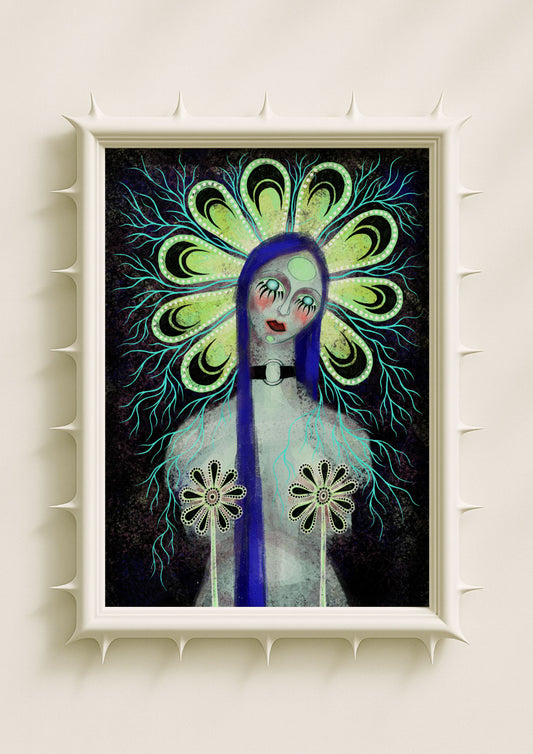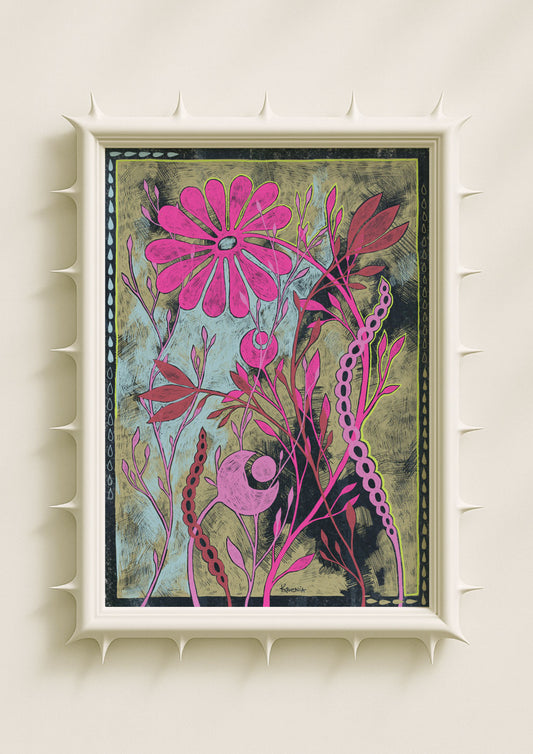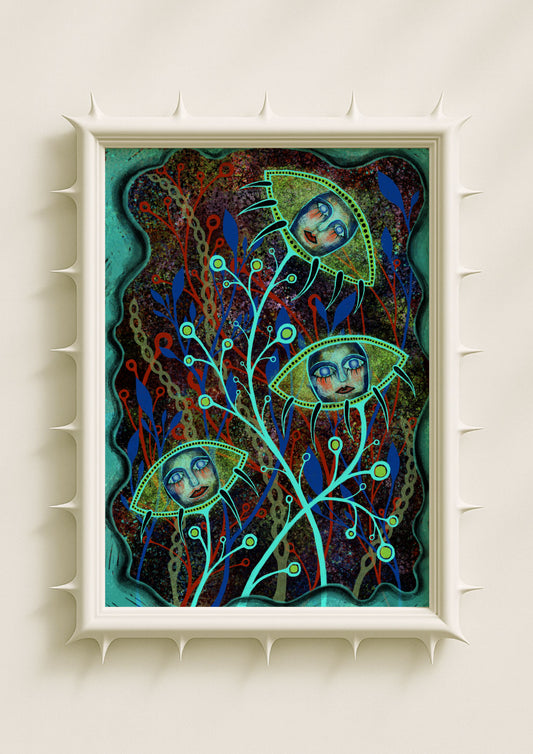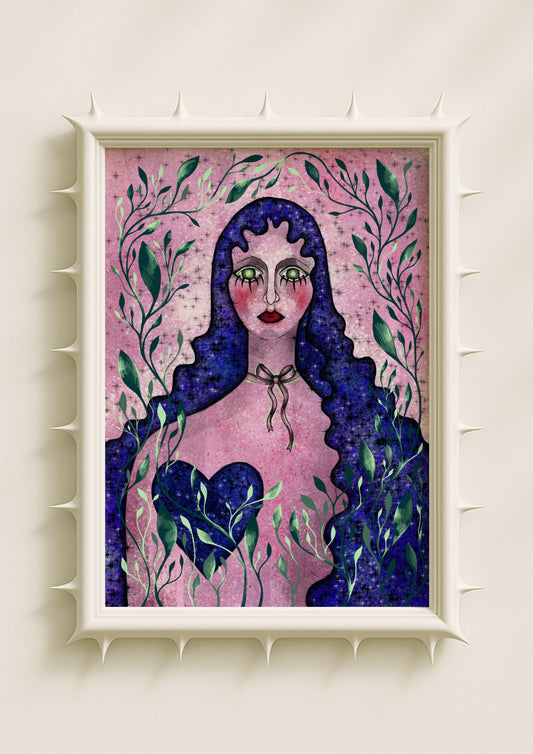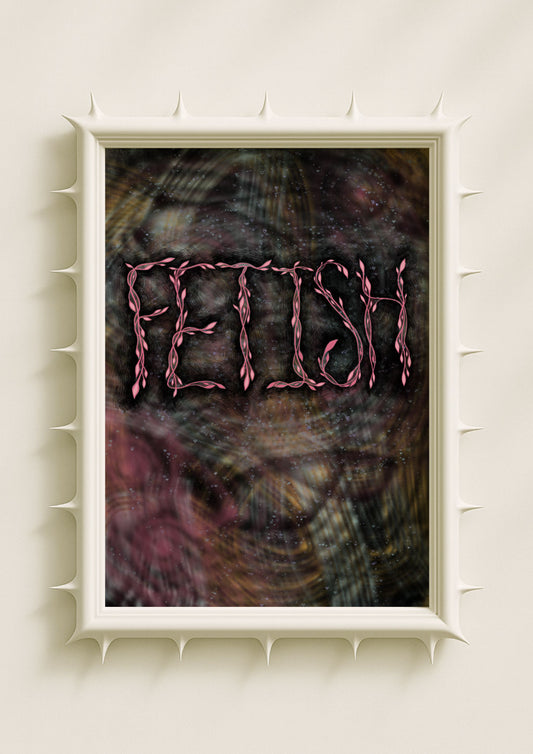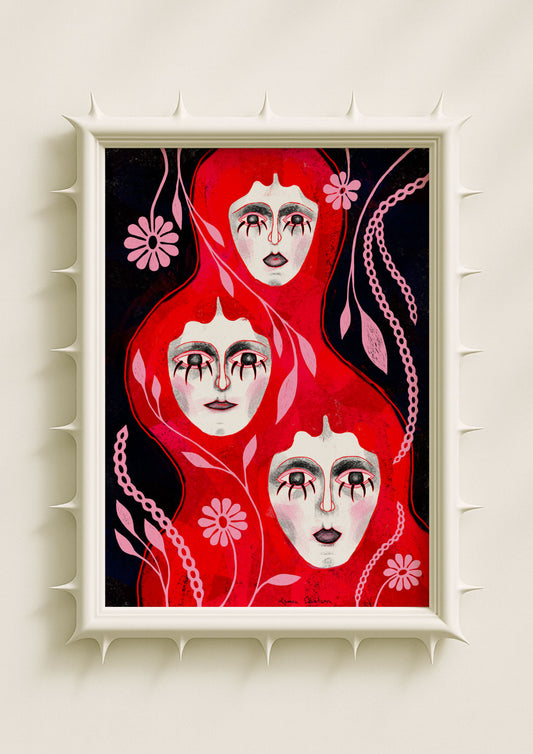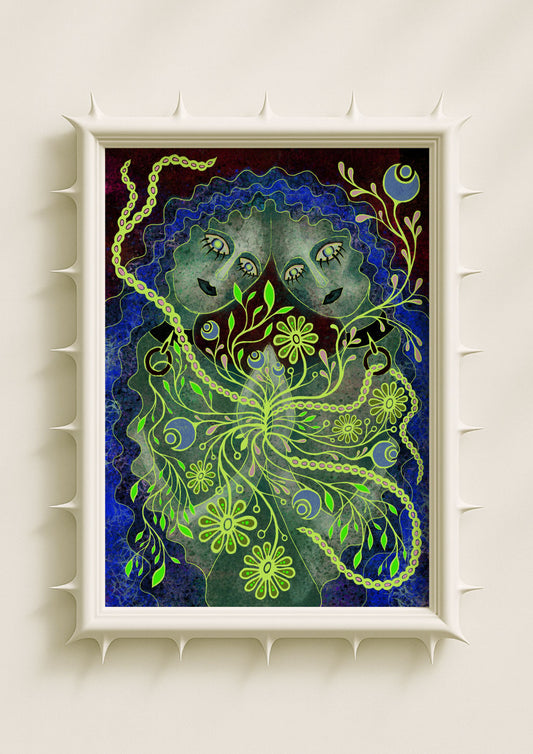The Feeling of a Dream You Can Almost Recall
Strangecore art occupies an unusual emotional space — not frightening, not comforting, but something in between. It feels like the moment after waking when a dream is still warm on the skin but already dissolving. The shapes are familiar, yet slightly altered. The faces resemble people you know, though their features soften or slide in ways your mind cannot fully grasp. This partial recognition is what gives strangecore art its atmosphere of half-memory: imagery that feels lived and forgotten at the same time.

The Soft Eeriness of the Unresolved
Dreams are rarely complete narratives. They unfold in fragments, skipping logic and replacing it with sensation. Strangecore artworks echo this structure. A face appears, but its proportions drift. A flower grows from a place where it shouldn’t. Objects hover without shadows or context. These elements do not ask to be interpreted literally. Instead, they mimic the emotional ambiguity of dreaming — that strange confidence that something makes sense even when it clearly doesn’t. The lack of resolution becomes part of the visual language.
Distortion as Emotional Echo
Dreams often distort people and places not to confuse us, but to convey emotional truth — fear without danger, longing without object, movement without direction. In strangecore art prints, distortions serve a similar purpose. Enlarged eyes reflect heightened sensitivity. Elongated limbs suggest a feeling stretching beyond physical limits. Blurred transitions between body and background hint at instability or dissolution. The artwork becomes an echo chamber where the emotional core of a memory remains, even if the edges have disappeared.

The Subconscious as a Source of Imagery
Much of strangecore’s power comes from its relationship to the subconscious. The imagery seems guided by intuition more than design, as if the artwork arises from a place that remembers differently than the waking mind. Small symbols — an isolated hand, a floating object, a shadow in the wrong direction — feel like fragments pulled directly from a dream, unfiltered and unrefined. These elements appear without explanation because the subconscious rarely offers one. It speaks in impressions rather than answers.
Familiarity Touched by Strangeness
One of the defining traits of strangecore wall art is its delicate balance between the known and the unknown. The viewer recognizes the general form: a face, a plant, a domestic object. Yet each carries a slight misalignment that shifts the emotional register. This is the same feeling as remembering a place from childhood — familiar, yet strangely emptied of detail. The artwork recreates this atmosphere by removing just enough realism to keep the viewer suspended between recognition and disorientation.
The Texture of Fading Memory
Half-memories are rarely crisp. They come with softness, haze and small blank spaces. Strangecore artworks adopt these qualities through blurred edges, muted colors and incomplete contours. The image itself seems to drift, as if it could evaporate if stared at too directly. The texture is dreamlike not because it imitates dreams literally, but because it mirrors how memory retains only emotional outlines. What remains is the mood, not the chronology.

Emotional Truth Without Clear Story
Strangecore does not rely on narrative. It relies on emotional resonance. Like dreams, the artworks communicate through atmosphere rather than sequence. A single composition can hold unease, nostalgia, tenderness and confusion all at once. This layered emotional state feels deeply familiar because it mirrors how the subconscious processes life. The artwork becomes a container for feelings we sense but cannot articulate — the same way a dream sometimes communicates more truth than a waking moment.
The Quiet Intimacy of the Unexplained
The power of strangecore lies in what it leaves unspoken. The works do not insist on meaning; they allow space for personal projection. This openness invites the viewer into a gentle collaboration, letting them fill the gaps with their own memories, sensations and dream-fragments. The art becomes intimate not through clarity, but through mystery — the soft pull of something that feels like it once belonged to you.
In this way, strangecore art becomes a visual form of remembering: not the facts, but the emotional weather of a moment that lingers long after the details have faded.
